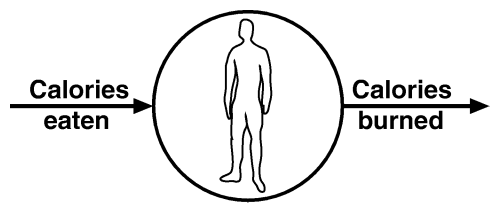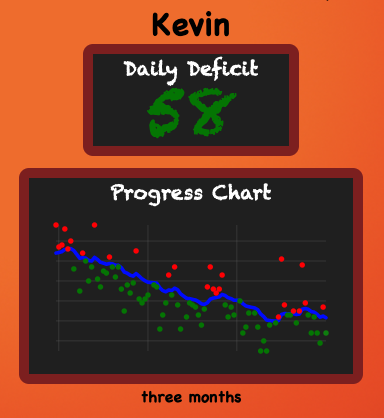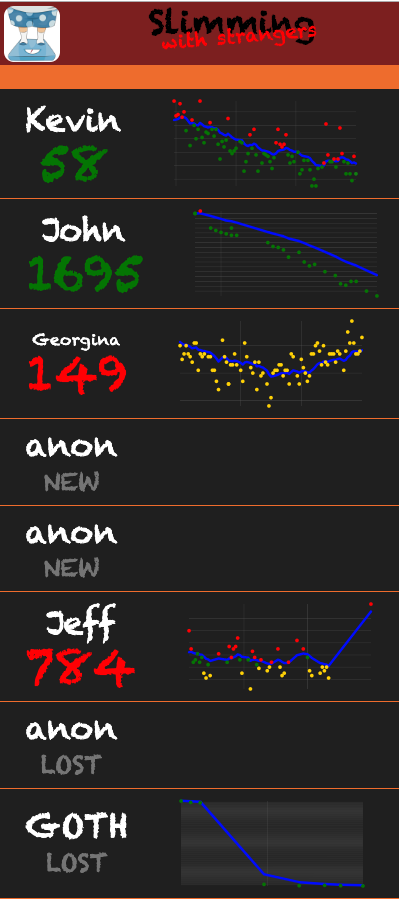Hacker’s Diet
I’ve been following John Walker’s Hacker’s Diet for about nine months now. I love the simplicity of it.
“Anyone can control their weight. It’s a simple matter of balancing calories.” – John Walker
Mr Walker’s book is a fun, simple read. If you are technically inclined and you want to lose weight, you should certainly read The Hacker’s Diet. The book introduces a model of the human body as a rubber bag full, mostly, with water. Every day stuff goes in and stuff comes out, but the rubber bag always obeys the laws of physics.
If you eat more calories than you burn, you gain weight at a rate of a 3500 kCal/lb. Simply count the calories you eat and subtract the calories you burn and the resulting number will tell you how quickly you will gain (or, hopefully, lose) weight.
But I think it’s even simpler than that.
If you weigh yourself every day, you can quickly figure out whether you are gaining weight. If your weight goes up, you are eating too much. Eat less.
Ok, ok. It’s not quite that simple. Your weight can vary by a couple of pounds each day as you retain water (or, as John Walker delicately puts it, solids); but if you plot the moving average you get a surprisingly stable trend line. From that trend, you can figure out your daily excess (or deficit) and decide to eat more (or less) accordingly.
People who work in software development use a planning technique called yesterday’s weather. The idea is based on weather forecasting. Imagine a computer that monitored the humidity and the temperature and pressure and a thousand other variables and used it to predict the weather with an accuracy of 82%.
It turns out that, if you just predict that today’s weather will be the same as yesterday’s, you’ll be correct about 70% of the time. That’s close enough for most purposes and it saves you a really expensive computer.
In my case, the prediction that I’ll eat about the same number of calories today as I did yesterday saves me lots of tedious calorie counting. With a little practice, I got quite good at knowing whether I was eating too much or too little and adjusting my intake accordingly.
Here’s my trend since last October:
You can see from the chart that I lost weight pretty steadily for several months. My daily deficit held steady at about 250 cal/day for most of that time. 250 calories is about a bagel a day and represents the loss of a pound every two weeks. Since I don’t really like bagels anyway (or french fries, or bread, or candy) it was easy to stop eating them. I hit my target weight about a month ago and, since then, my weight has crept up a little (I don’t like bagels but I do enjoy beer).
The little red dots are a warning sign that I might be eating too much (notable red dots: The Captain’s Table Dinner in January and Piratefest in July) and the prominent red 74 says that I need to have half a pint less beer at Quiz Night.
Like any good hacker, I decided that I didn’t like any of the weight trackers out there so I wrote my own for my iPhone (it was also an excuse to learn Objective C). I might decide to stick the app on the app store one day but, for now, it’s just a bit of fun that I am sharing with some friends. Ping me if you want to play along too.
Epilogue
This post is from 8 years ago. The iPhone app is long dead but I wrote a little web app a few years ago.
It’s a bit bare on the bones but it has served me, a handful of friends and a couple of strangers well enough for a while now.
Try it if you like: Slimming with Strangers
If you weigh yourself in pounds, it works pretty well. If enough people nag me, I’ll let you enter your weight in stone or kilograms.




